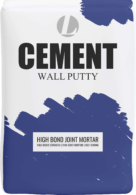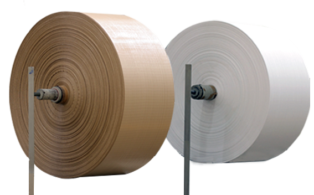
In the modern landscape of product packaging, the importance of packaging bags cannot be overstated. From the food and agriculture sectors to construction and industrial applications, diverse types of packaging bags have been created to address the unique needs of each industry.
These bags not only safeguard the products during storage and transit but also contribute to operational efficiency, cost-effectiveness, and other unbelievable business benefits.
However, Each type of bag has its unique features and benefits, allowing cement manufacturers to select the most suitable option based on their requirements and operational demands. In light of this, as a leading packaging bag manufacturer in South Asia, Lincon Polymers Private Limited has listed below the comprehensive guide addressing cement manufacturers' challenges while selecting cement packaging bags. So without further ado let’s delve in!
An Importance of Selecting Cement Packaging Bag
A range of materials, such as wall putty, gypsum powder, and cement, are used by construction businesses to cap off their projects. Frequently, these goods are presented in paper bags, which are prone to ripping, shattering, and moisture damage. This might result in product loss and contamination, causing project delays and expense spikes.
In order to address these issues, choosing cement packing bags with important considerations in mind provides a solution with enhanced usability, structural integrity, and convenience of use, making them the industry's preferred option for cement packaging.
10 Things to Consider While Selecting Cement Packaging Bags
If you want to maintain the quality and integrity of cement, you must consider the following points when selecting cement packaging bags:. Have a quick look.
1. The bag can hold the weight of the product at its best.
2. Check for the presence of an ISO number on the bag.
3. Choose a bag that preserves its quality.
4. Make sure to choose a high-quality bag that improves printing capabilities.
5. Consider a bag with handles and other useful features.
6. Opt for a bag that promotes a sustainable brand image.
7. Select the appropriate bag size for your product.
8. The chosen bags should be simple to fill and empty.
9. Choose a reputable packaging bag manufacturer and supplier to get high-quality packaging solutions.
Top 3 Widely Used Packaging Bags for Cement Industry
A selection of the right packaging bag for the cement industry maintains the quality and integrity of cement during storage as well as transportation. The following are the common cement packaging bags
AD*Star Block Bottom Bag for Cement Packaging
AD*star block bottom bags are a type of packaging that features a block bottom design and a valve style. Top block bottom bag manufacturers, like as Lincon Polymers Private Limited, use Starlinger's high-speed, fully automated Ad-Star/Block bottom bag-making machines. These bags come in a variety of sizes and can be styled open-mouth or valved.
Benefits of Block Bottom Bags
→ Better stability for cement products.
→ A valve in the bag allows workers to easily fill the cement.
→ Improved safety in handling operations.
→ Excellent printing ability, promoting business to new heights.
BOPP Laminated PP Woven Bags for Cement Packaging
BOPP laminated PP woven bags are widely used in Food Packaging for Pets/Animals or Humans, but with evolving needs, these bags can benefit the cement industry too. Lincon Polymers Private Limited leverages advanced technology and cutting-edge machinery like a 10-color Rotogravure printing machine for designing bopp laminated pp woven bags that offer end-to-end competitive advantages.
Benefits of BOPP Laminated PP Woven Bags
→ 2x better customization and printing advantages
→ Improved sustainable brand image
→ Cost-effective packaging solution for various industries.
Paper & Poly Bags for Cement Packaging
Paper poly bags are also known as paper laminated bags. As mentioned above paper bags are not a good option for the cement industry to choose from, but paper polly bags look the same as multi-wall paper bags but are more durable, flexible, and provide extra strength. By selecting paper poly bags for cement packaging, manufacturers can take advantage of various benefits.
Benefits of Paper Poly Bag:
→ Reliable protection during handling and transport.
→ The inner polyethylene layer keeps cement dry.
→ Ample space for branding and information printing.
Bottom Line:
When selecting cement packaging bags to meet business needs, it is essential to consider factors such as durability, strength, sustainability, and ease of handling. By choosing bags that align with these requirements, cement manufacturers can strategically open the door to success.
As a leading BOPP bag manufacturer in India, Lincon Polymers Private Limited offers tailored packaging solutions that meet specific application requirements. For further details, reach out to our expert team today.
Our Products
Providing the most versatile and advanced products under one roof in the Woven Industry







